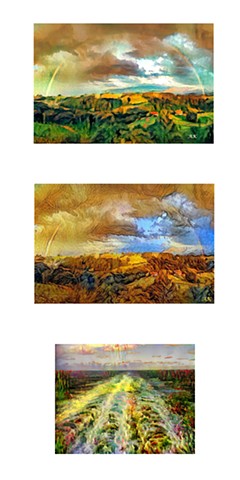COVID-19
The paradox of digital art right now can’t be avoided. It’s one of the most direct art experiences available in a reality still under quarantine, but who wants to look at another screen? As this isn’t the art’s fault, let’s consider the work of computer scientist Alex Kagan with unstrained eyes. Meant to be exhibited at the Krug Community Circle in Wheeling, IL, this April, Kagan’s pictures fall into one of a few categories: flowers, landscapes, cityscapes. What’s curious is how they look to be the work of a dozen different artists. This is because they are in fact produced not by one artist but by two: Kagan and his computer. Kagan runs his source imagery through a variety of AI programs in order to achieve compositions that resemble the styles of famed modern painters—Cézanne, Klee, Chagall, Pissarro, and so on. He then has his computer apply the same parameters to a different source image, kind of like Picasso and Braque trying to one up the other, but also not at all. Personally, I’d like to see some Georgia O’Keefe—or, to get outside the Western canon, maybe Ogata Korin—action on those flowers, which lack the visual challenge of other transformations. Overall, the effect is of a highly sophisticated filter that allows the user to turn anything into anything else with a simple click, though in truth Kagan must make hundreds of clicks to achieve his images.
—Lori Waxman 2020-08-23 8:26 AM
